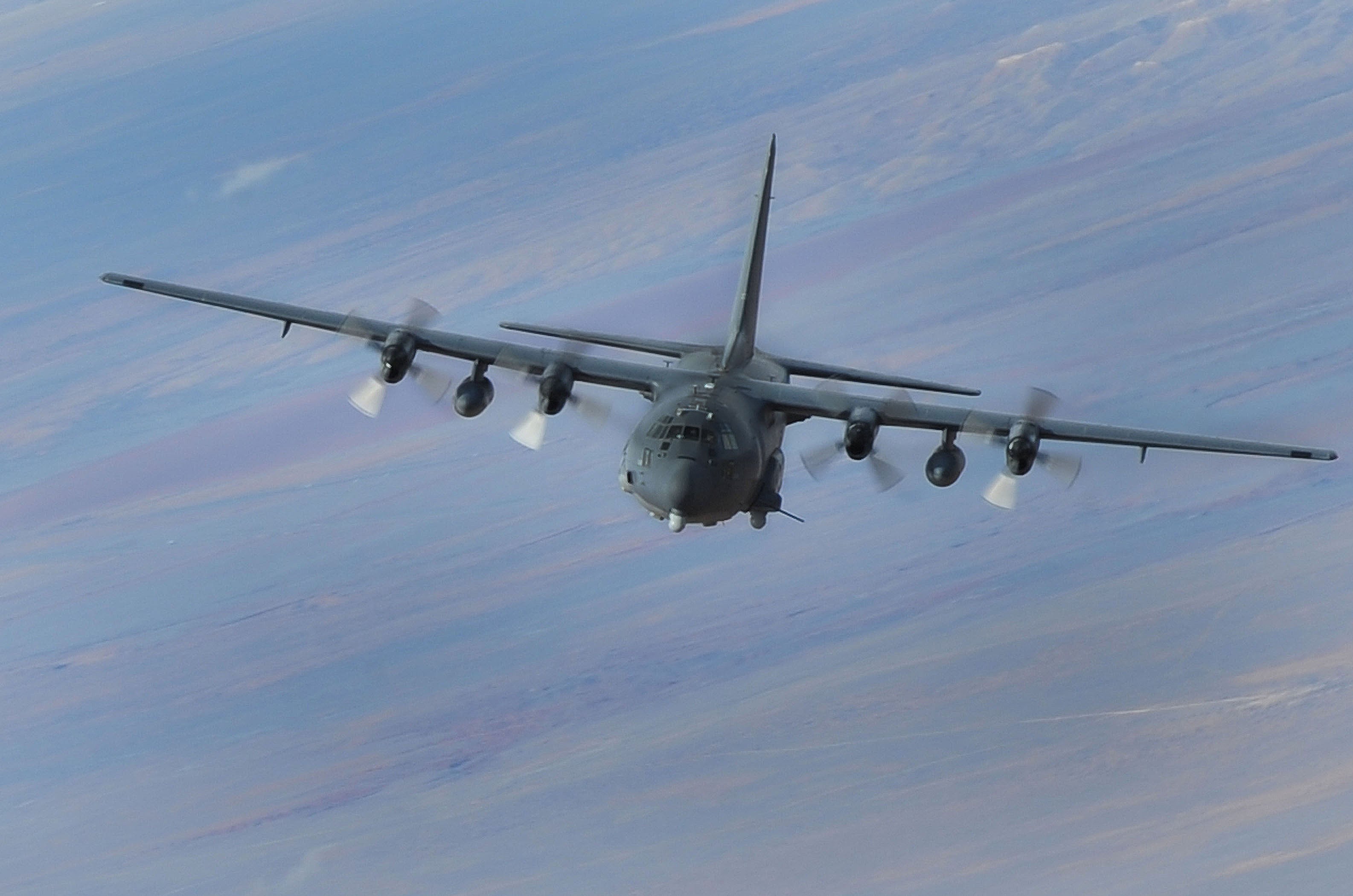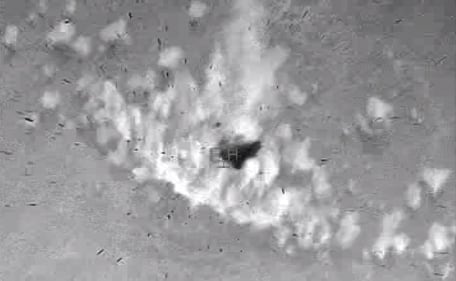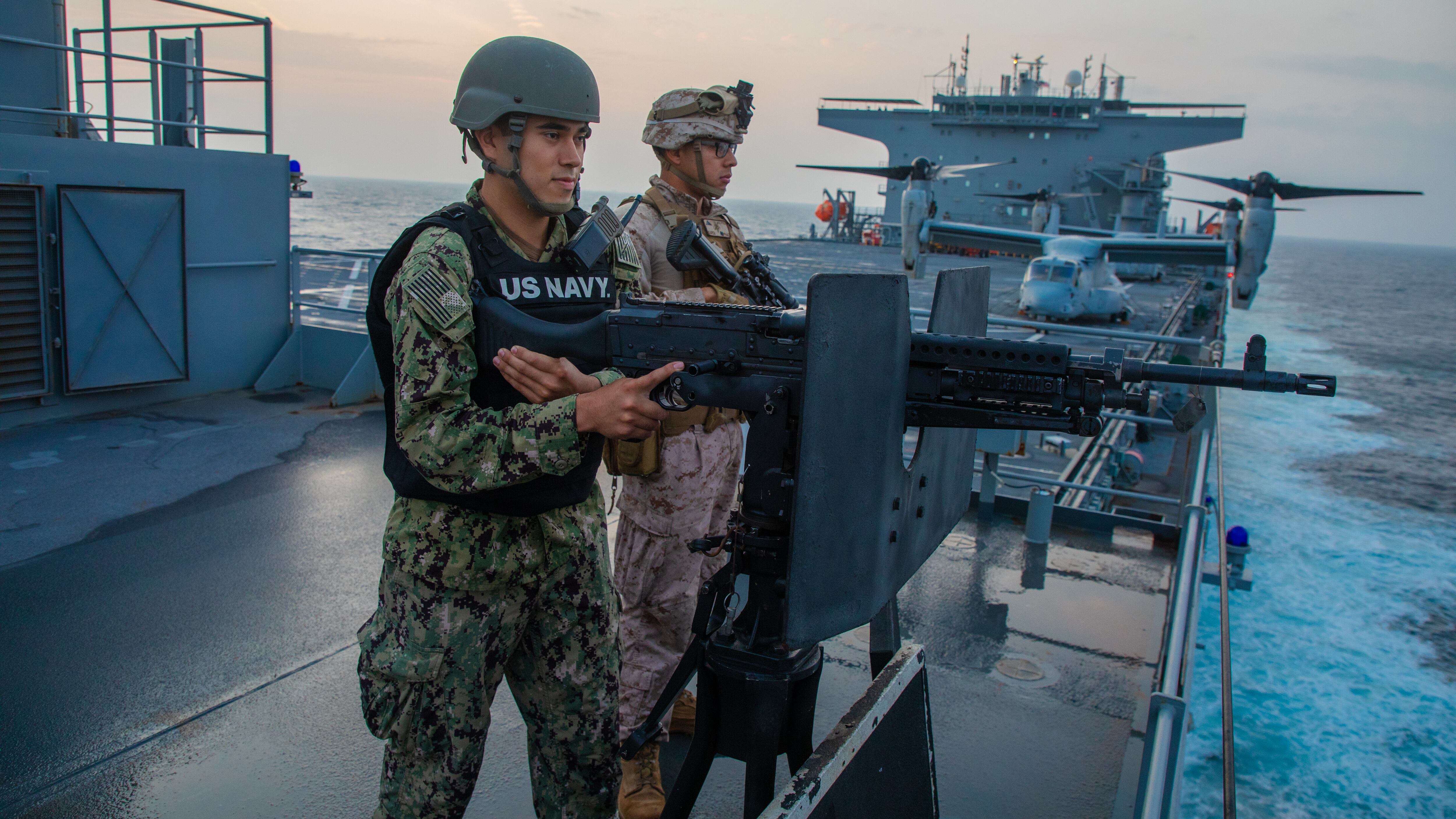What do you get when you combine a Special Operations AC-130W Stinger II gunship with the Navy’s P-8A Poseidon recon plane and a patrol coastal ship?
A big boom and a spray of debris.
A joint exercise launched March 8 and 9 in the Persian Gulf involving the Cyclone-class Monsoon and the two aircraft was designed to see how well a surface patrol ship and a long-range spy plane could select targets in the Persian Gulf for a Special Operations Command Central gunship to blast to bits.
The scenario envisioned the U.S. forces providing maritime security, such as during convoy operations, in contested waters.
“Our surface forces integrating with aircraft that have the firepower of an AC-130W brings a capability to the joint force that profoundly enhances our lethality in the maritime environment. The addition of the gunship to the joint maritime battle significantly enhances our ability to detect, track, engage and defeat surface threats in order to control water space in the Arabian Gulf,” said Capt. Peter Mirisola — the commander of Destroyer Squadron 50 and Combined Task Force 55 — in a prepared statement released Sunday.
“The effectiveness of this joint capability to conduct maritime strike, reconnaissance and armed overwatch was clearly displayed during this live-fire event.”

Although Special Operations MH-6M Little Bird helicopters were integrated with U.S. Navy forces during Operation Earnest Will, which tried to protect convoys of tankers against Iranian attacks between 1987 and 1988, this was the first exercise of its kind in the Persian Gulf linking the patrol coastal fleet with a Poseidon and AC-130W Stinger II.
The Gulf tapers into a vital choke point — the Strait of Hormuz — where roughly 21 million barrels of oil per day are carried on large commercial vessels, about 21 percent of the globe’s liquid petroleum liquids consumption.
It also came amid ongoing tensions between Iran and the United States that has included six strikes against oil tankers in May and June of last year, acts of terrorism that Washington blames on Tehran.
“We’ve effectively employed similar joint capabilities in the past to counter belligerent forces that attempt to disrupt or hinder the free flow of commerce and freedom of navigation in this region using force, or attack U.S., coalition, or partner forces in a conflict,” said U.S. 5th Fleet commander Vice Adm. Jim Malloy.

The $122 million Lockheed Martin AC-130W Stinger II is a modified C-130 Hercules four-engine turboprop plane that can fire the 30mm GAU-23 cannon, 105 mm M102 howitzer, standoff precision-guided munitions, the GBU-39 Small Diameter Bomb and the GBU-53/B StormBreaker — a highly precise glide bomb — during both close air support and air interdiction missions.
The plane has a range of 2,500 nautical miles but can be refueled in midair.
RELATED

Prine came to Navy Times after stints at the San Diego Union-Tribune and Pittsburgh Tribune-Review. He served in the Marine Corps and the Pennsylvania Army National Guard. His awards include the Joseph Galloway Award for Distinguished Reporting on the military, a first prize from Investigative Reporters & Editors and the Combat Infantryman Badge.



